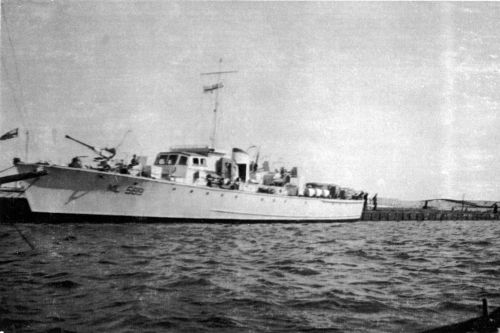- Author
- Wright, Ken
- Subjects
- Ship histories and stories, WWII operations, History - WW2
- Tags
-
- RAN Ships
- None noted.
- Publication
- December 2008 edition of the Naval Historical Review (all rights reserved)
Malta
In 1942, only two Fleet Sweepers and two Motor Launches remained in Malta as part of the 3rd ML Flotilla when the larger ships were driven out by the German and Italian Air Forces. The flotilla had been assigned the dangerous job of mine clearance operations in the approaches to Malta’s Grand Harbour. During 1943, RANVR Lieutenant Keith Nicol served on Motor Launch 569 as part of the 3rd ML Flotilla, which by this time had increased in size. In addition to minesweeping, they fought furious battles with enemy aircraft and E‑boats, and took part in major convoy battles as well as assisting in the landings that drove Mussolini’s Italy out of the war. Malta was the only place from which the allies could sever the axis supply line and was the key to the defence of the Middle

East and all the lands beyond. The motor launches of the 3rd ML Flotilla played a major part in the allied operations in the Mediterranean and the survival of the strategic island by keeping the harbour free of mines. Allied submarines were able to operate from the island and, combined with the RAF, were able to destroy approximately half a million tons of enemy supplies destined for Rommel’s forces in North Africa.
HMS Ajax – D Day
LST [Landing Ship Tank] 237 was transferred from the United States Navy to the Royal Navy on 12 July 1943 and took part in the allied beach-head landing at Anzio, thirty three miles south of Rome on 22 January 1944. Lieutenant Peter Smith RANVR aboard 237 was one of several Australians present during the landings.
At dawn, on 6 June during the D-Day landings, the German coastal battery at Longues-sur-Mer engaged in a duel with the American cruiser USS Arkansas and the French ships, George-Leygues and Montcalm in support. The battery stopped firing then trained its guns on USS Bulolo, the headquarters ship of the US 3rd Infantry, forcing the ship to retire. The British cruiser HMS Ajax replied engaging the battery.
RANVR Lt John Evans Read, the Officer of the Watch aboard Ajax: ‘During the early hours of June 6 we were in position off the Normandy coast at 0600 to commence the initial bombardment. Our first target was a nest of heavy coastal defence guns. After an exchange of fire lasting 17 minutes, we asked for another target. We started at Gold Beach next to the American sector and during our stay off the beach, moved through June and Sword, plus a hasty trip to Portsmouth for 6’’ ammunition. Our last task was a bombardment near Caen, very nearly at our extreme range of 24,000 yards. After a few shots, the Army asked us to go home as our shells were falling way short into our own troops. Our guns were so badly worn you could actually hear the shells rattling as they went up the barrel, so it was back to Portsmouth to have new guns fitted to our turrets. We had fired approximately 2,587 shells’. Of those who took part in the D Day landings, approximately 1000 were Australians.
At the beginning of the war, England had twenty eight Coastal Force craft of which twelve were at Malta, six at Hong Kong and ten in England. By the end of the European war, 1,560 had been built. The men in those boats were involved in 780 separate naval actions, 464 of them in home waters. In those 464 actions, it is claimed that 269 enemy vessels were sunk or probably sunk for the loss, through enemy action, of only 76 Coastal Force craft.
Lt. T. Scott RANVR [son of the famous Antarctic explorer Robert Scott] spent most of his time serving onboard His Majesty’s Steam Gun Boat Grey Fox as the navigation officer.
Mine disposal
Among the first RANVR Australians to train at King Alfred in the Rendering Mines Safe section was Lieutenant Hugh Syme who became only one of eight to be awarded both the George Cross, the George Medal and Bar for his bravery in rendering mines safe. His medal citation reads: During 21 months of service in the Enemy Mining Section of HMS Vernon, Lieutenant Syme carried out 19 mine recoveries or disposal operations including 5 acoustic, 8 magnetic, 2 acoustic magnetic mines and recovery of the first and only Type T sinker mine’.
Lieutenant John Mould was awarded the George Medal and Lieutenant L. Goldsworthy the George Cross, the George Medal, Distinguished Service Cross and Mentioned in Dispatches, both for their work in the Rendering Mine Safe section. Lt George Gosse was awarded the George Cross for defusing, with improvised tools, a new ‘oyster’ type mine in Bremen Harbour, Germany.




